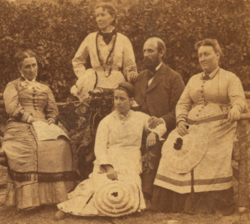History
In May 1935, members of the Council of Friends, a group of fundamentalists excommunicated from the Salt Lake City–based the Church of Jesus Christ of Latter-day Saints, sent a handful of followers to the Short Creek Community with the express purpose of building "a branch of the Kingdom of God." [2] Fundamentalist leader John Barlow believed that the isolated Creek could provide a place of refuge for those engaging in the covert practice of polygamy, which was criminalized using bigamy statutes from 1935 to 2013 and 2017 to 2020. Within a month, the town's population more than doubled. The Council of Friends membership desired a remote location where they could practice plural marriage, which had been publicly abandoned by the LDS Church in 1890. [3]
On July 26, 1953, Arizona Governor John Howard Pyle sent troops into the settlement to stop polygamy in what became known as the Short Creek raid. The two-year legal battle that followed became a public relations disaster that damaged Pyle's political career and set a hands-off tone toward the town in Arizona for the next 50 years. The Fundamentalist Church of Jesus Christ of Latter Day Saints (FLDS) later developed in the same geographical region and changed the name to Colorado City and Hildale to eliminate any ties to the Short Creek raids. [1]
This page is based on this
Wikipedia article Text is available under the
CC BY-SA 4.0 license; additional terms may apply.
Images, videos and audio are available under their respective licenses.


